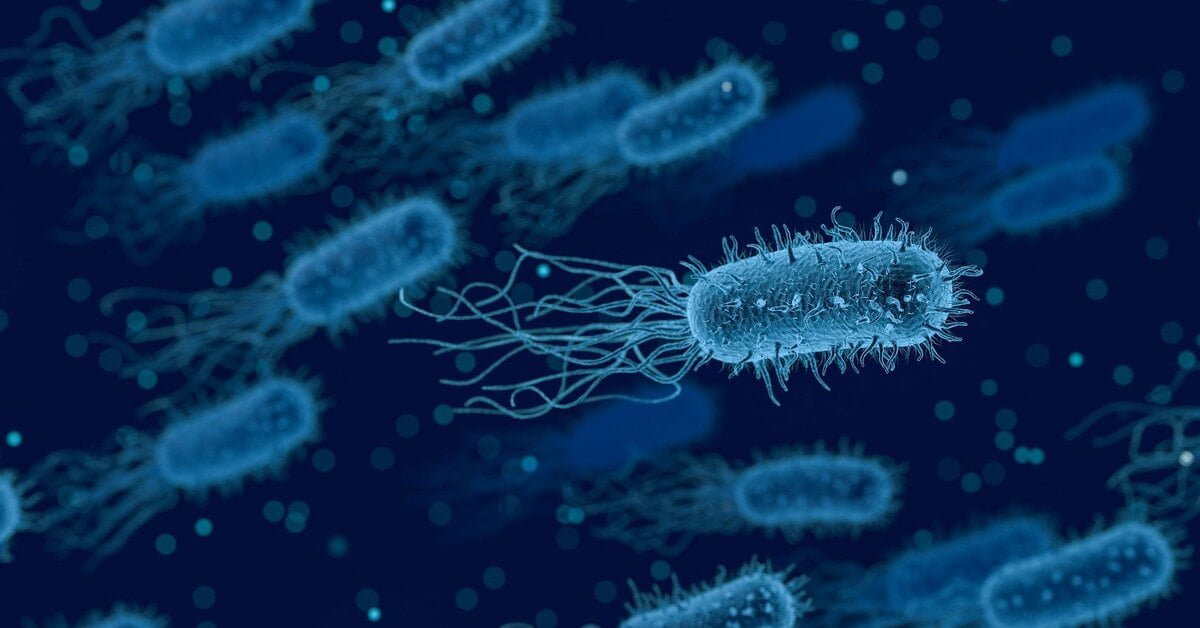How Are Viruses Different from Bacteria Apex? The Battle of the Microbes
Viruses and micro-organisms are essentially exceptional microorganisms, with viruses being non-living entities that require several cells to replicate, while bacteria are residing unmarried-celled organisms capable of independent existence. Viruses are tons smaller than micro-organisms and feature DNA or RNA as genetic material, unlike micro-organisms, which continually have DNA. Viral infections, inclusive of the common cold and HIV, vary from bacterial infections like strep throat and tuberculosis in their mechanisms and remedies. Antiviral medicines and vaccines target viruses, whereas antibiotics are used to treat bacterial infections. Understanding these variations is essential for effective sickness prevention and remedy strategies.
Introduction
Understanding the difference between viruses and bacteria is crucial for comprehending the complexities of biology and medication. Both microorganisms play extensive roles in the environment and human health, yet they are one-of-a-kind in lots of ways.
Basic Characteristics
What Are Viruses?
Viruses are microscopic infectious retailers that may most effectively mirror within the dwelling cells of an organism. They are taken into consideration as non-residing entities due to the fact they cannot carry out metabolic strategies on their own. Viruses are pretty numerous, infecting animals, flora, fungi, and even microorganisms.

What Are Bacteria?
Bacteria are single-celled microorganisms that exist anywhere: in soil, water, or even within the human frame. They are considered dwelling organisms due to the fact they can develop, reproduce, and carry out diverse metabolic methods independently. Bacteria can be useful, inclusive of the ones in the gut that aid digestion, or dangerous, causing illnesses like strep throat and tuberculosis.
Structure
Structural Components of Viruses
- Capsid: The protein shell that encloses the viral genome.
- Genetic Material: Either DNA or RNA, but not both.
- Envelope: Some viruses have a lipid envelope derived from the host mobile membrane.
Structural Components of Bacteria
- Cell Wall: Provides structural aid and form.
- Cell Membrane: Controls the motion of substances in and out of the cell.
- Cytoplasm: Gel-like substance in the cellular wherein metabolic procedures occur.
- Genetic Material: Typically a single circular DNA molecule.
Size Comparison
Viruses are notably smaller than micro-organisms. While most viruses range from 20 to three hundred nanometers in length, micro-organisms are generally tons large, measuring between zero 2 to 10 micrometers. This size difference is enormous considering the size of microscopic organisms.
Reproduction
Viral Reproduction
- Lytic Cycle: The virus attaches to a number mobile, injects its genetic material, replicates, and reasons the mobile to burst, releasing new viruses.
- Lysogenic Cycle: The viral DNA integrates into the host’s genome and replicates alongside it without causing on-the-spot harm.
Bacterial Reproduction
- Binary Fission: A shape of an asexual replica wherein an unmarried bacterial mobile divides into identical daughter cells.
- Conjugation: A system wherein bacteria transfer genetic material through direct touch.
Genetic Material
Viruses could have either DNA or RNA as their genetic cloth, but never both. Bacteria, then again, continually have DNA as their genetic material, normally inside the shape of a single round chromosome.
Living vs. Non-Living Debate
Why Viruses Are Considered Non-Living
Viruses can’t carry out metabolic processes or reproduce on their very own. They must hijack a host cell’s machinery to copy, which is why they may be taken into consideration as non-living.
Why Bacteria Are Considered Living
Bacteria can grow, reproduce, and perform diverse metabolic methods independently, making them unequivocally living organisms.

Pathogenicity
How Viruses Cause Disease
Viruses motivate disorder by way of invading and hijacking host cells, disrupting regular cell capabilities, and triggering immune responses that could every so often cause signs.
How Bacteria Cause Disease
Bacteria reason disorder through various mechanisms, along with toxin manufacturing, invasion and colonization of host tissues, and triggering inflammatory responses.
Examples of Viral Infections
- Common Cold: Caused using rhinoviruses.
- Influenza: Caused by the influenza virus.
- HIV/AIDS: Caused with the aid of the human immunodeficiency virus.
Examples of Bacterial Infections
- Strep Throat: Caused through Streptococcus microorganism.
- Tuberculosis: Caused via Mycobacterium tuberculosis.
- Urinary Tract Infections: Often result from Escherichia coli.
Treatment and Prevention
Antiviral Medications
Antiviral tablets, consisting of the ones used to treat HIV and influenza, work with the aid of inhibiting the replication of viruses. However, they’re precise to precise viruses and are less large-spectrum than antibiotics.
Antibiotics
Antibiotics are used to deal with bacterial infections killing organisms or inhibiting their growth. They are useless for viral infections.
Vaccines
Vaccines are to be had for both viral and bacterial illnesses. They work with the aid of stimulating the immune machine to understand and fight pathogens correctly.
Role in the Ecosystem
Beneficial Roles of Viruses
Viruses play roles in gene switches and the law of bacterial populations. Bacteriophages, viruses that infect bacteria, assist in manipulating bacterial levels in numerous environments.
Beneficial Roles of Bacteria
Bacteria are vital for processes like nitrogen fixation, decomposition, and digestion. Beneficial micro-organisms in the human intestine are crucial for retaining fitness.
Research and Biotechnology
Viruses in Gene Therapy
Viruses are used in gene therapy to deliver genetic fabric into cells to deal with genetic issues. Their potential to insert DNA into host cells makes them valuable gear in biotechnology.

Bacteria in Biotechnology
Bacteria are used in the production of antibiotics, fermentation procedures for meals and liquids, and bioremediation to smooth up environmental pollutants.
Immune Response
How the Body Defends Against Viruses
The immune device uses diverse strategies to combat viruses, along with the production of antibodies and the activation of T-cells to break inflamed cells.
How the Body Defends Against Bacteria
The immune reaction to microorganisms involves phagocytic cells that engulf and ruin bacteria, and the manufacturing of antibodies that neutralize bacterial pollution.
Conclusion
Understanding the differences between viruses and bacteria is crucial for effective treatment and prevention of infectious sicknesses. Both microorganisms have specific characteristics, roles within the atmosphere, and implications for human health. While bacteria are residing organisms able to have impartial existence, viruses require a host cellular for replication. Recognizing those distinctions enables growing-centered cures and preventive measures.
FAQs about How Are Viruses Different from Bacteria Apex
Can a pandemic end up a bacterium?
No, viruses and bacteria are essentially special types of organisms. A virus can not end up a bacterium as they have got distinct structural and purposeful homes.
Why don’t antibiotics paint on viruses?
Antibiotics target particular capabilities of bacterial cells, which include the cellular wall or protein synthesis machinery. Viruses do not have those functions, rendering antibiotics ineffective against them.
How do vaccines paintings otherwise for viruses and micro organism?
Vaccines for each virus and microorganism stimulate the immune gadget to recognize and fight the pathogens. However, the unique antigens used in vaccines differ depending on whether or not the goal is a virulent disease or a bacterium.
Are there useful viruses like there are beneficial micro-organisms?
Yes, some viruses may be beneficial. For example, bacteriophages can manipulate dangerous bacterial populations, and certain viruses are used in gene remedies to treat genetic diseases.
How do I know if my infection is viral or bacterial?
A healthcare provider can determine the nature of contamination via scientific assessment, laboratory checks, and occasionally by considering the symptoms. Generally, viral infections tend to cause systemic signs like fever and fatigue, while bacterial infections often produce localized signs such as pain and swelling.
My Opinion
In my opinion, understanding the differences between viruses and bacteria is important for public health. It allows us to apprehend why remedies like antibiotics do not work for viral infections and highlights the importance of vaccines and antiviral medicinal drugs. This information empowers us to take higher care of our fitness and make informed choices approximately clinical remedies and preventive measures. Moreover, appreciating the specific roles those microorganisms play in our surroundings can lead to innovative solutions in medication and biotechnology.
Disclaimer
This article is for informational purposes most effective and should now not be considered a medical recommendation. Always consult a healthcare expert for analysis and remedy of scientific conditions. The statistics supplied right here are primarily based on current knowledge and studies however might not be observed in all situations or individuals.







